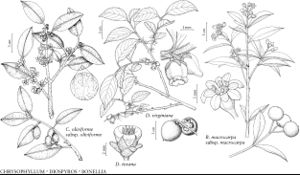Difference between revisions of "Diospyros virginiana"
Sp. Pl. 2: 1057. 1753 ,.
FNA>Volume Importer |
imported>Volume Importer |
||
| (One intermediate revision by the same user not shown) | |||
| Line 7: | Line 7: | ||
}} | }} | ||
|common_names=Possumwood | |common_names=Possumwood | ||
| + | |special_status={{Treatment/ID/Special_status | ||
| + | |code=F | ||
| + | |label=Illustrated | ||
| + | }}{{Treatment/ID/Special_status | ||
| + | |code=E | ||
| + | |label=Endemic | ||
| + | }} | ||
|basionyms= | |basionyms= | ||
|synonyms={{Treatment/ID/Synonym | |synonyms={{Treatment/ID/Synonym | ||
| Line 61: | Line 68: | ||
|publication title=Sp. Pl. | |publication title=Sp. Pl. | ||
|publication year= | |publication year= | ||
| − | |special status= | + | |special status=Illustrated;Endemic |
| − | |source xml=https:// | + | |source xml=https://bitbucket.org/aafc-mbb/fna-data-curation/src/2e0870ddd59836b60bcf96646a41e87ea5a5943a/coarse_grained_fna_xml/V8/V8_514.xml |
|genus=Diospyros | |genus=Diospyros | ||
|species=Diospyros virginiana | |species=Diospyros virginiana | ||
Latest revision as of 22:44, 5 November 2020
Trees, to 15–30(–40) m. Bark dark reddish brown, deeply furrowed and irregularly blocky, not flaking. Leaves deciduous; petiole 0.7–1 cm; blade dark green and glossy adaxially, broadly ovate to elliptic, (5–)6–15 × 2.5–8 cm, thin, apex acute to acuminate, abaxial surface glabrous (or sparsely pubescent, especially when young), without basilaminar glands. Inflorescences solitary flowers or 2–3-flowered cymes, borne on twigs of current season. Flowers 1–2 cm; sepals 4; petals 4; stamens 16; anthers dehiscent along their entire length; pistillate flowers usually with 8 staminodes; styles 4, connate basally; ovary glabrous (except at apex). Berries yellow to orange or dark red (rarely purple), often glaucous, depressed-globose, globose, oblong, ovoid, or conic, (2–)3–5(–7.5) cm diam., glabrous (except at apex). Seeds reddish brown, ellipsoid, ca. 1.5 cm. 2n = 60, 90.
Phenology: Flowering Mar–Jun; fruiting Aug–Dec.
Habitat: Forests, seasonally flooded bottomlands, dry ridgetops, abandoned agricultural land
Elevation: 0-1100 m
Distribution

Ala., Ark., Conn., Del., Fla., Ga., Ill., Ind., Iowa, Kans., Ky., La., Md., Miss., Mo., N.J., N.Y., N.C., Ohio, Okla., Pa., S.C., Tex., Va., W.Va.
Discussion
The extensive morphological variation in Diospyros virginiana, coupled with variable chromosomal races, merits further taxonomic study. Pubescent leaves and purple fruits, most common in the Ozark region, suggest past hybridization with D. texana. These and other distinctive traits may characterize whole clonal groves through root-suckering. The fruits were an important food for wildlife, native peoples, and Euro-American colonists, but have never been effectively commercialized, despite selection of superior clones over the years. Wild persimmons are extremely astringent until thoroughly ripe. The tough, hard wood has been used for shuttles and heads of golf clubs.
Selected References
None.
